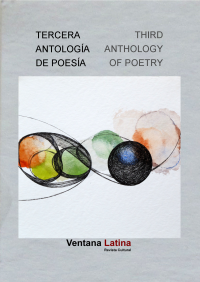New English-language guide to Brazil
By Russ Slater*
On 1 February 2013 I sent out an email starting a process that is still consuming much of my life. Over the past nine months I’ve been working on a book and CD focused on Brazilian music and culture, to be called Sounds and Colours: Brazil. Though the book is now finished – it is due to arrive from the printers on 20 November, at which point my house will be turned into a warehouse, wall-to-wall with cardboard boxes – there’s still a long way to go. Sounds and Colours is a website, and now a publisher, that I set up, and that runs on fumes of passion alone (albeit with the odd advert to pay the bills). Over the coming months we’ll be marketing and distributing the book ourselves, trying to find ways of getting the book out to people in Europe, North America and Brazil whom we think will be really interested in a copy.
The idea of the book was simple. I wanted to create a physical object (though I love the Internet’s instant reach, I still crave for things I can hold) that would be part-fanzine, part-book and part-magazine. And I wanted it to come with a CD of new music. I’d already embarked on a similar project last year with Colombia, and now set my sights on Brazil. I wanted to find stories, photos and illustrations that showed a different side of the country, one far from the stereotypes, one that highlighted creativity and originality. Thankfully, I was not alone, and over 50 people agreed to help with writing, editing, translating and illustrating the book, in addition to many others who sent in photos and artwork to adorn its pages. In addition, I set up a fundraising campaign to try and reduce the burden of such a big project, with over 80 lovely people helping put some financial fire into our collective belly.
As mentioned, the book is now complete and you will soon be able to buy it. My sincerest hope is that it will give people a rare, real and refreshing insight into Brazilian culture. There are articles on music from all over Brazil, with specials on the recent afrobeat craze, tecnobrega, the underground music scenes in Rio, São Paulo, Salvador, Recife and Belo Horizonte; we’ve got Hermano Vianna telling us the story of Michel Teló’s ‘Ai, Se Eu Te Pego’, as well as Rolling Stone Brasil editor Pablo Miyazawa waxing lyrical on his favourite Sepultura album; we’ve got tales of bate-bola, Luiz Gonzaga, and Recife carnival… and that’s just the music. There are also dedicated sections for art, literature and film, as well as a special photo essay on the Brazilian protests that happened in June this year. Our contributors are a mixture of fans, journalists, academics, illustrators, artists, photographers and anyone else who was passionate enough about Brazilian culture to get involved.
One of the most interesting things I found from doing the book was the incredible resourcefulness of Brazilians. I write about culture from all over Latin America and I find that Brazil is often left out of debates, partly because of the language difference, but also because within Brazil itself there is a continent that could exist independently from the rest of South America. There are musicians in São Paulo that can live comfortably while still only performing within the limits of the state. This was not the case when I spent time in Bogotá, Colombia – almost every musician I met there had a second job. This insular environment, along with a Brazilian flair for creativity continually blew me away during my research, especially when I was looking at art. I was confounded when I discovered the work of Gilvan Samico; his woodcut engravings are ripe in character and distinctively made, yet could have come from no other place than Pernambuco. How he took inspiration from the literatura de cordel and turned the stories into works of art is unparalleled and impossible for me to fathom. Equally impressive is the work of Derlon Almeida, a young street artist from Recife who was also influenced by cordel, but instead found his canvas on the walls of his city. It is true that the artist in Pernambuco only has to look within his or her own universe for inspiration. But the same could be said of countless other places in Brazil, all of which are dripping with culture.
The work of both Samico and Almeida was affected by what was available to them. Samico only lived in a small apartment when he was starting his career, so he took up the least space-intensive art that he could, which was engraving. Similarly, Almeida would not be getting international exposures and gallery exhibitions if he had not taught himself how to paint on the streets first. This resourcefulness perhaps finds its apogee in music. The US researcher/writer Shannon Garland has written an incredible piece for the book entitled Soccer, Samba, Soundcloud, which shows how Brazil developed MySpace before MySpace (it was called Trama), how people started micro-financing concerts by their favourite musicians using Queremos! and how collectives like Fora do Eixo have been able to create networks of musicians and promoters outside of the major cities.
To that we can add the tecnobrega DJs who rip their mixes during their sets and sell them on the streets in the days following to make money, or the way that Brazilian musicians have embraced giving music away for free (something which far too many Western musicians are caught up with). Criolo is the perfect example of a musician who gave away his album for free, quickly becoming one of the country’s biggest new stars. We can also find another great example in the world of literature, where authors like Alessandro Buzo, Ferréz and Sergio Vaz are currently gaining a foothold in the Brazilian literary world. It was only 10 years ago that all of these authors started self-publishing their own novels, poems and fanzines in São Paulo’s peripheral neighbourhood, but thanks to their resourcefulness and originality they have now infiltrated the mainstream, appearing at a surprising number of literary festivals this year.
Really, I could go on and on. Every time I visit Brazil it steals a little more of my heart. And every time I visit a new city or state I realise that there’s still so much I don’t know. My hope is that with Sounds and Colours Brazil a few more people will get to know a bit more of the unknown, perhaps get inspired by Brazil in a way that they never expected, and most certainly learn that Brazil is far more than football, samba and City of God. There is no doubt that we will be bombarded with “postcard pictures” of Brazilian life over the next few years, allied to the contrasting tales of murder, poverty and social rights in “World Cup cities” no less, but this thirst for escapism and sensationalism is only a tiny part of the picture. If any country could be identified more with its music and culture than Brazil, then I’ve never heard of it. It’s time we all learnt a bit more (myself included) about what makes that music and culture so special. The journey starts here…
* Russ Slater is the editor of Sounds and Colours Brazil, which was published in the UK on 20 November 2013. You can find out more about the project at www.soundsandcolours.com/02-brazil.




 Copyright © 2024
Copyright © 2024